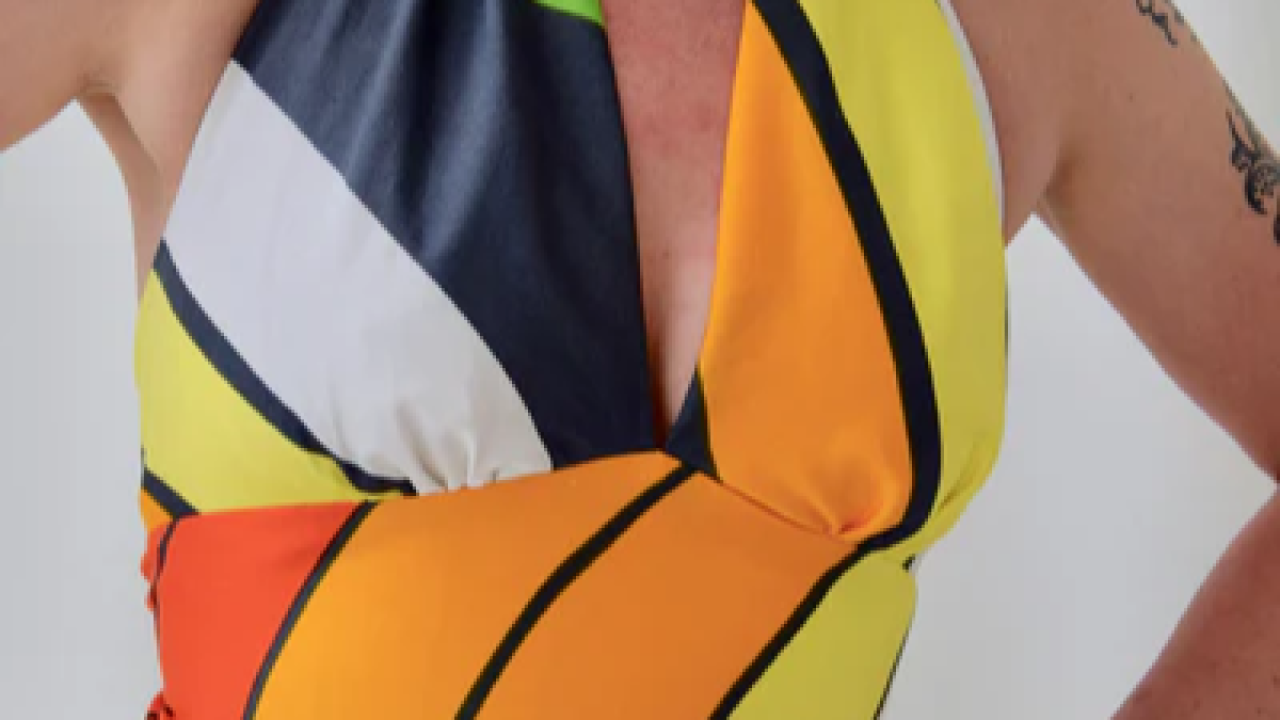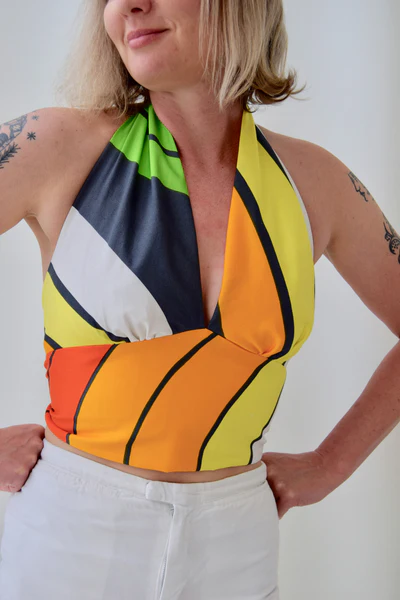AllVintageStyles
The Vintage Fashion Encyclopedia
Halter Top


A vintage halter top is a backless sleeveless shirt that ties behind the neck, popular during the 1970s disco era as part of the decade's embrace of body-conscious fashion and liberated attitudes toward revealing clothing.
Quick Facts
- Era: 1970s (peak popularity 1973-1979)
- Origin: United States (disco and beach culture)
- Garment Type: Backless sleeveless top with neck tie
- Key Identifiers: Neck tie closure, backless design, fitted bodice, often in bold prints or metallic
- Typical Resale Price: $25-$120 (authentic vintage pieces)
- Best For: Disco enthusiasts, summer vintage styling, and 1970s fashion collectors
History & Evolution
The halter top gained popularity in the early 1970s as part of the decade's sexual revolution and changing attitudes toward women's clothing, evolving from practical swimwear into mainstream fashion. The style perfectly captured the era's emphasis on physical fitness, sun-worshipping culture, and liberation from conservative dress codes that had dominated previous decades.
During the mid-1970s disco boom, halter tops became essential nightclub attire, often featuring metallic fabrics, bold patterns, and glamorous details that complemented the era's dance-focused nightlife. The backless design allowed for freedom of movement on dance floors while making bold fashion statements that reflected the decade's confidence and hedonistic lifestyle.
The style reached peak popularity during the late 1970s when halter tops appeared in various fabrics from casual cotton to luxurious silk, worn everywhere from beaches to upscale restaurants. Quality vintage pieces featured well-constructed bodices with proper support and tie systems designed for secure wear during active dancing. Today, authentic 1970s halter tops are prized for their bold designs and representation of the decade's liberated fashion attitudes.
Authentication Tips
Authentic 1970s Features:
- Quality construction with built-in bust support or shelf bra
- Period-appropriate fabrics like polyester knits, silk, or cotton blends
- Bold prints, metallics, or solid colors typical of disco era fashion
- Secure tie systems with substantial fabric for proper neck support
- Vintage sizing that tends to run smaller than contemporary measurements
Common Reproductions/Modern Pieces:
- Lightweight construction without proper support structures
- Modern stretch fabrics or synthetic blends not available in the 1970s
- Contemporary prints or patterns that lack authentic 1970s aesthetic
- Cheap tie systems or flimsy neck closures that indicate modern manufacturing
- Modern fitted cuts that don't match vintage 1970s proportions
Styling & Use Cases
- Best for disco enthusiasts: Pair with high-waisted wide-leg pants and platform shoes for authentic 1970s dance floor glamour
- Ideal for summer vintage wear: Style with vintage denim shorts and wedge sandals for classic 1970s casual looks
- Perfect for festival fashion: Combine with flowing skirts and bohemian accessories for modern vintage-inspired festival styling
Modern styling tips:
- Layer over fitted camisoles or bralettes for contemporary modest styling while maintaining the halter aesthetic
- Pair with high-waisted modern jeans and contemporary accessories for updated retro casual looks
- Style with blazers or cardigans for surprising contrast between revealing and conservative elements
FAQ
Q: How can I tell if a halter top is authentic 1970s vintage?
A: Look for quality construction with built-in support, period-appropriate fabrics and prints, secure tie systems, and vintage sizing that runs small. Authentic pieces show construction methods typical of 1970s garment manufacturing.
Q: What's the typical price range for vintage halter tops?
A: Authentic vintage halter tops range from $25-$120 depending on designer, fabric quality, and condition. Pieces with exceptional disco-era details or designer labels command higher prices among 1970s fashion collectors.
Q: How should I care for a vintage halter top?
A: Check fabric content and care accordingly - many 1970s synthetics can be gently machine washed, while silk or delicate pieces should be hand washed or dry cleaned to preserve the fabric and construction.
Q: What makes vintage halter tops valuable to collectors?
A: Their representation of 1970s sexual liberation and disco culture, embodiment of the decade's bold fashion attitudes, association with dance and nightlife culture, and reflection of changing social attitudes toward women's clothing and body autonomy.
📷: Shawna McLellan
